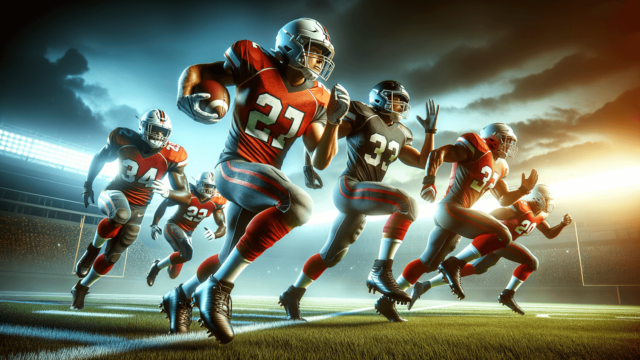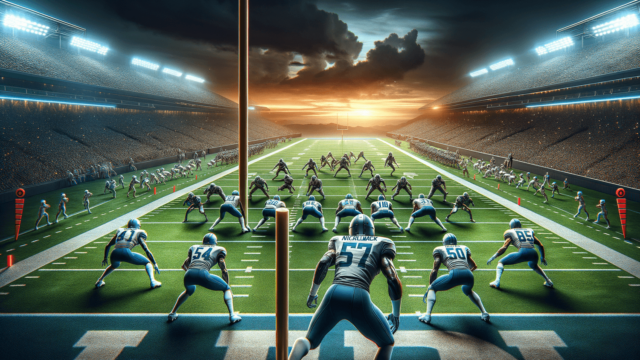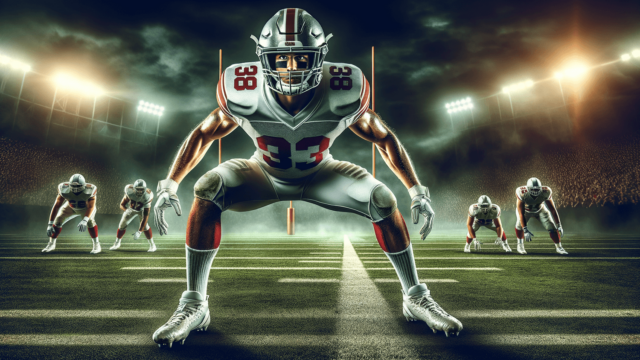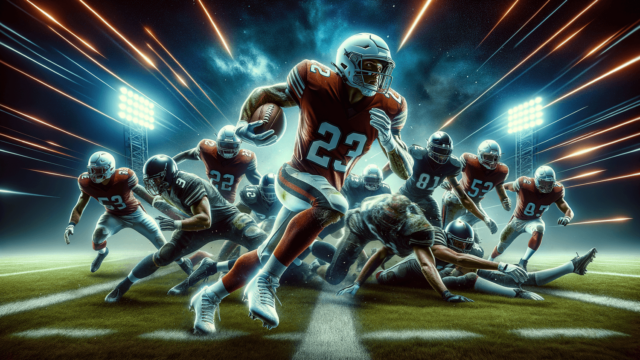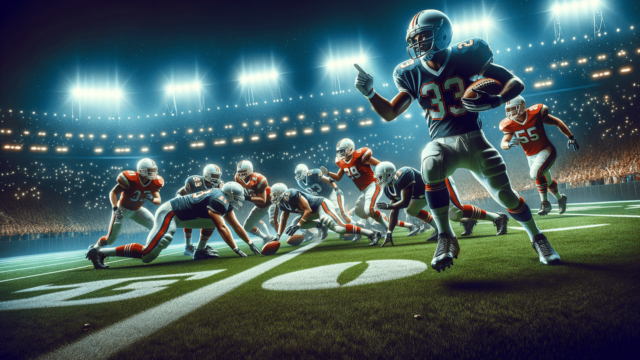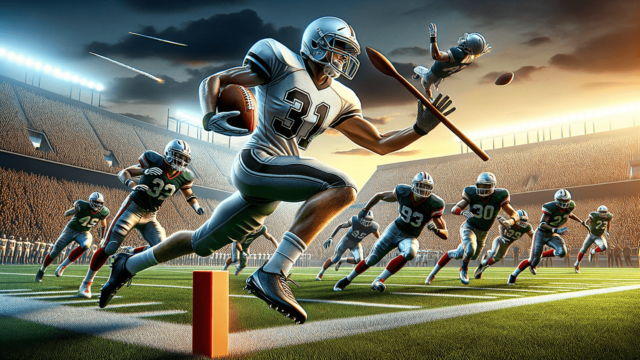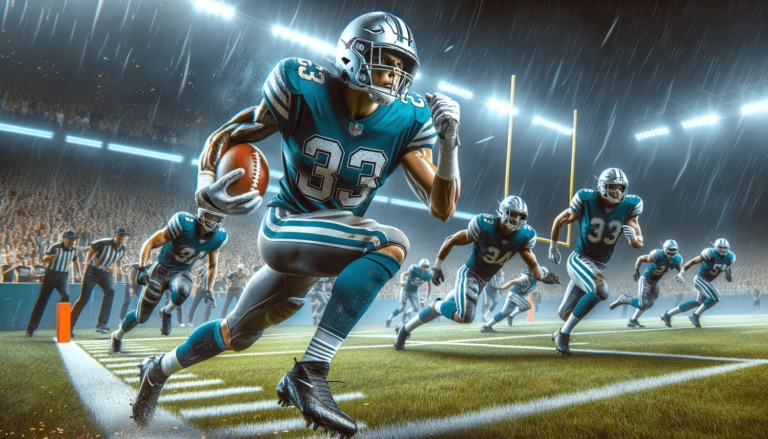
A DB (Defensive Back) in football is a player who specializes in defending against passing plays. Defensive Backs consist of cornerbacks, who cover wide receivers, and safeties, who provide deep coverage and support against both passing and running plays.
Role of a Defensive Back (DB) in Football
The main objective of a DB in football is to defend against passing plays and prevent the opposing team from catching passes or gaining yards. Often referred to as the ‘secondary,’ Defensive Backs have crucial responsibilities on the field, which include covering offensive receivers, disrupting offensive pass routes, and making tackles.
Types of Defensive Backs
There are two primary types of DBs: cornerbacks and safeties, each with unique roles and responsibilities.
Cornerbacks (CBs)
Cornerbacks are usually the fastest players in the secondary, responsible for covering wide receivers and disrupting their pass routes. Their primary duties include:
- Man-to-Man coverage: In this approach, the cornerback is assigned to a specific wide receiver and must stick to them throughout the play to prevent receptions.
- Zone coverage: Here, cornerbacks are given responsibility for a specific area or zone on the field, and they must prevent any receivers from catching passes within their assigned zone.
Safeties (S)
Safeties provide support in both pass and run defense. There are two types of safeties:
- Free Safety (FS): The FS usually plays deep in coverage, often as the last line of defense. They need exceptional ball-tracking skills and rely on anticipating the quarterback’s actions, as their primary responsibility is to intercept passes and prevent big plays.
- Strong Safety (SS): The SS is typically larger and more physical than the FS, providing support in run defense and short pass coverages. Their role is versatile, combining the skills of a linebacker and a cornerback, and they may be called upon to blitz the quarterback or make tackles close to the line of scrimmage.
Skills Required for a DB
To excel as a DB, players should possess the following skills:
- Speed and Agility: As very quick and agile athletes, DBs must be able to keep up with the offensive receivers and change directions rapidly.
- Ball Skills: DBs need to read the quarterback’s actions and anticipate passes, making plays on the ball to either break up passes or make interceptions.
- Physicality: Being physical while covering receivers and making tackles is essential, especially for strong safeties who need to take on blocking assignments and support in the run defense.
- Field Awareness: Understanding offensive formations and player tendencies will help a DB position themselves to make plays and prevent big gains.
Tips for Playing Defensive Back
To enable success as a DB, players should consider the following tips:
- Master your footwork and speed: Footwork and speed are the cornerstones of a great DB. Work on agility and acceleration drills to improve quickness and the ability to cover receivers efficiently.
- Study the game: Understanding offensive and defensive schemes along with the strengths and weaknesses of players you will be facing can give you a significant advantage on the field.
- Focused Training: Incorporate specific exercises and training drills tailored to enhancing the skills needed for a Defensive Back, such as reaction time, vertical jump, and overall body strength.
- Practice your technique: Repetition helps perfect the skills required for a DB, so practice press coverage, backpedaling, and open-field tackling regularly.
Defensive Backs in Different Football Formations
Defensive Back positioning and roles may vary depending on the defensive scheme and formation. Some popular defensive formations include:
- 4-3 Defense: In this formation, there are two cornerbacks and two safeties positioned to cover wide receivers and deep passes.
- 3-4 Defense: This formation has a similar secondary structure as 4-3, with two cornerbacks and two safeties, but can offer more versatility to adapt to the offense’s formation.
- Nickel Package: With three cornerbacks and two safeties, this formation is designed to counter teams that predominantly pass or use multiple wide receiver sets.
- Dime Package: Featuring four cornerbacks and two safeties, this package is typically employed when an offense is deploying a high number of wide receivers or is in an obvious passing situation.
Frequently Asked Questions about Defensive Backs (DB)
To further clarify your understanding of Defensive Backs in football, here are answers to five common questions related to the role and its responsibilities.
What is the main difference between a cornerback and a safety?
The main difference between a cornerback and a safety is their primary coverage responsibilities. Cornerbacks cover wide receivers in man-to-man or zone coverage, while safeties provide support in both pass and run defense, with Free Safeties focusing more on pass coverage and Strong Safeties providing run support and short pass coverage.
What role does a DB play in run defense?
In run defense, a DB contributes by being the secondary line of defense after the defensive linemen and linebackers. Their role is to read the play, avoid blockers, and make tackles when the ball carrier gets past the first line of defenders. Strong Safeties, in particular, are more involved in run defense due to their physicality and versatility.
How do DBs communicate on the field?
On the field, DBs communicate with each other primarily through pre-snap verbal signals and hand gestures. They share information on formations, coverage responsibilities, and upcoming offensive plays. Effective communication between Defensive Backs is crucial for ensuring cohesive defensive play and avoiding blown coverages.
How do DBs prepare for a specific opponent?
DBs prepare for a specific opponent by studying game film of their upcoming rival’s offensive players. They analyze the receiver’s strengths, weaknesses, and tendencies, as well as the quarterback’s playing style and preferences. Familiarity with the opponent’s offensive system and strategies helps DBs anticipate plays and position themselves to make big stops.
What physical attributes are essential for a DB?
Key physical attributes for a DB include speed, agility, and quickness, as they need to keep up with fast receivers and change directions rapidly. They should also possess good body control, which aids in making fluid transitions while backpedaling and breaking on the ball. Physicality and upper body strength are essential for making tackles, jamming receivers at the line of scrimmage, and shedding blocks.
Featured Posts
- No pillar pages found.
